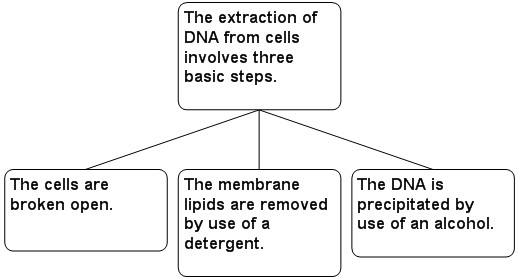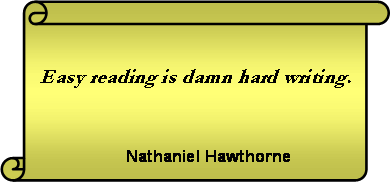The Science Of Scientific Writing .Course Introduction. Overview : Content and Packaging : Enriched Blueprints : Compartmentalisation : Course Mechanics
OVERVIEW: The way to well-written science
PART I: Paragraphs and Sentences
SET A: Paragraphs: The Maps Behind Them
SET B: Paragraphs: Using Maps to Meet Readers' Expectations
SET C: Paragraph Coherence and Cohesion
SET D: Sentences
SET E: Scientific Sections (including Methods)
SET F: Scientific Sections: The Discussion
SET G : Scientific Sections: The Introduction
SET H : The Paper as a Whole
Collaborators need to be able to separate the "content" from the "packaging of the content"
If a writing team rushes straight to the draft stage they can be overwhemed by having to tackle issues of both content and style (or packaging). Let me give an example that illustrates the distinction between these two important concepts, because this is central to understanding how we will deconstruct the writing process and find our first blueprint. Imagine you have just finished an exciting research project and you now must (1) give a fifteen minute talk on your work to a class of high school students, and (2) write an abstract for a paper you will present at a conference of specialists in your field. In both cases, the content remains basically the same, and is the "essence", or the "gist" of what you have to say. But you would obviously need to individually tailor what you say to each audience, because of major differences in their backgrounds, what you want to achieve in each setting, and the mode of presentation. The "tailoring" with respect to the mode of presentation (short talk versus scientific abstract) is what we mean by packaging the content.
While one may intuitively grasp this distinction, it may not be immediately obvious how we can practically consider the content of any communicative in isolation from its packaging. In truth this cannot be done completely, because some subtler aspects of communication depend not so much on what we say but how we say it. But again it seems intuitively true that expository communication at least often has an inner core of content (what one might call its gist) that is packaging-independent. The recognition of this has, in the field of argumentation, inspired many successful approaches to represent arguments more or less symbolically. Scientific arguments depend (for the most part) on what is called informal logic, and this type of logic has, in my opinion, has been most profitably de-packaged using an "argument mappng" approach. For example, an argument supporting the claim: "Cats are better pets than dogs", might be mapped like this:

Of course, the central content "core" of non-argumentative text, for example a description, also yields easily to "mapping" as well:

Explanations, another common form of scientific discourse, can also often be depicted in map form.
It is not hard to see how maps like those shown here could be used in the early stages of preparing either a verbal or written presentation, and even more obvious is that they are very easy to follow. The main reason for this is that the spatial relationships help us to quickly grasp various types of conceptual relationship between the map components (e.g. logical, temporal, parent-child). These advantages become even more obvious when we need to deal with extensive content. The most ambitious argument mapping project to date started in 1987, and still continues today, exploring the question "Can Computers Think?". So far there are about 800 sub-arguments! On a much less grand scale, in the classroom, I have been staggered how quickly I can understand an argument or description mapped out in this way, even if the student cannot write very coherently in a more traditional format. It is also much easier to discuss the essay, because I can easily switch the focus from individual ideas (what's in the boxes) to the relationships between ideas (the organisation of the boxes).
In this course, such maps will be what we will refer to as "the content" and they are our first, basic "blueprint" that our team members can use to discuss their embryonic paper.
The mapping approach also helps us to unpack the content
 It might seem, especially to a less experienced researcher, that the content itself will be relatively easy to map with, because it is almost self-evident. Ths is not always the case. By the time any researcher is ready to write up a project, they may have been immersed in it, or related work, for years. During that time, their knowledge has been built up from the consideration of hundreds, probably thousands, of "bits" of information, and experiences. These items of understanding coalesce and evolve over time, and researchers develop a highly integrated, often almost automatic and intuitive, grasp of their area (e.g. see related discussion in Hofstader, p500-501). This helps them to make rapid and powerfully insightful decisions that propel their research forward, maybe to great acclaim! But it also makes it harder for them to appreciate the needs of audience members less-experienced in the field. Luckily, the strategy that I recommend for content-checking also helps the writer to disentangle the tight threads of an advanced understanding.
It might seem, especially to a less experienced researcher, that the content itself will be relatively easy to map with, because it is almost self-evident. Ths is not always the case. By the time any researcher is ready to write up a project, they may have been immersed in it, or related work, for years. During that time, their knowledge has been built up from the consideration of hundreds, probably thousands, of "bits" of information, and experiences. These items of understanding coalesce and evolve over time, and researchers develop a highly integrated, often almost automatic and intuitive, grasp of their area (e.g. see related discussion in Hofstader, p500-501). This helps them to make rapid and powerfully insightful decisions that propel their research forward, maybe to great acclaim! But it also makes it harder for them to appreciate the needs of audience members less-experienced in the field. Luckily, the strategy that I recommend for content-checking also helps the writer to disentangle the tight threads of an advanced understanding.
Other mapping approaches
The maps used in this course are all hierarchical, that is they all branch from a single point, and are entirely nested. They are therefore different from more free-form "brainstorming", non-hierarchical approaches such as concept mapping. Free-form approaches may serve as useful tools at an even earlier (and important) stage of the writing process, what I call the "idea generation" phase. But when one finally is ready to write, I believe an hierarchical diagram is more appropriate because it explicitly encourages an essential feature of expository writing: that all the ideas and information should, like our maps, be thoroughly nested. It seems to do so in a much more compelling way than a traditional text outline, even though an outline is also meant to be hierarchically structured. The ease with which a map's graphical nature lends itself to further graphical refinement (to be covered shortly) is another important feature.
The maps also differ from the famous Mindmaps approach, promoted by Tony Buzan. While these are also hierarchical, the MindMaps approach is not well suited to collaboration because its "graphical grammar" is (to some extent) inconsistent and cluttered. Like concept mapping, the Mindmaps approach can be a powerful tool for individual brainstorming, and the more free-form, idiosyncratic attitude they encourage is highly appropriate for the idea generation phase of writing.
(At this point in time, this course does not include any extended discussion of strategies for the idea generation phase of writing).

......